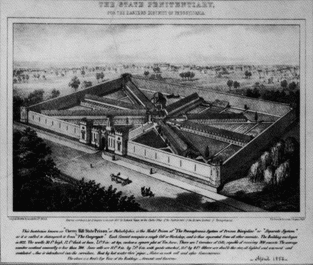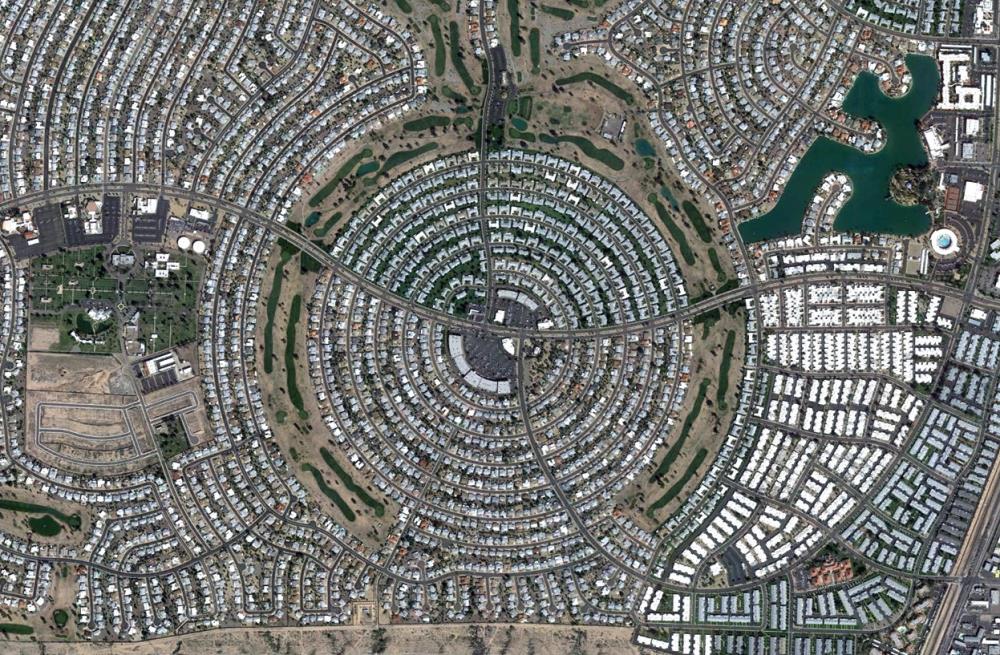Jeremy Bentham's Panopticon penitentiary (1791) Wikipedia |
Michel Foucault on the
Panopticon
Foucault describes the workings of Jeremy Bentham's panopticon, an architectural design which permits a centralized supervisor to monitor all of an institution's inmates: Each individual, in his place, is securely confined to a cell from which he is seen from the front by the supervisor; but the side walls prevent him from coming into contact with his companions. He is seen, but he does not see; he is the object of information, never a subject in communication. The arrangement of his room, opposite the central tower, imposes on him an axial visibility; but the divisions of the ring, those separated cells, imply a lateral invisibility. And this invisibility is a guarantee of order. If the inmates are convicts, there is no danger of a plot, an attempt at collective escape, the planning of new crimes for the future, bad reciprocal influences; if they are patients, there is no danger of contagion; if they are madmen there is no risk of their committing violence upon one another; if they are schoolchildren, there is no copying, no noise, no chatter, no waste of time; if they are workers, there are no disorders, no theft, no coalitions, none of the distractions that slow down the rate of work, make it less perfect or cause accidents. (Discipline & Punish pp 200-201) |
 Eastern State Penitentiary, Philadelphia Adopted panopticon principles Now a ruin, tourist site, and artist exhibition site |
|
 Sun City, aerial view |
in a gated- or homeowner association community...] The ultimate goal, Foucault explains, is for the inmate to internalize the mechanism of surveillance which the building establishes. [I]t is at once too much and too little that the prisoner should be constantly observed by an inspector: too little, for what matters is that he knows himself to be observed; too much, because he has no need in fact of being so. In view of this, Bentham laid down the principle that power should be visible and unverifiable. Visible: the inmate will constantly have before his eyes the tall outline of the central tower from which he is spied upon. Unverifiable: the inmate must never know whether he is being looked at at any one moment; but he must be sure that he may always be so. (Foucault p. 201) |
Surveillance camera on the building across from (north) the Orpheum Theatre, downtown Phoenix |
| SOURCE: Foucault, Michel. Discipline
and Punish: The Birth of the Prison. Trans.
Alan Sheridan. New York: Vintage, 1977. Note: Quotes from Foucault and intro text borrowed from a stimulating hypermedia essay by Rob Callahan, "Institutions, Individuals, and Information Technology's Mediation of the Body" (4/2001), both links drawn from this specific page of his text. [Update: UNFORTUNATELY THESE LINKS ARE BROKEN, CAN NO LONGER FIND IT. 2014). |